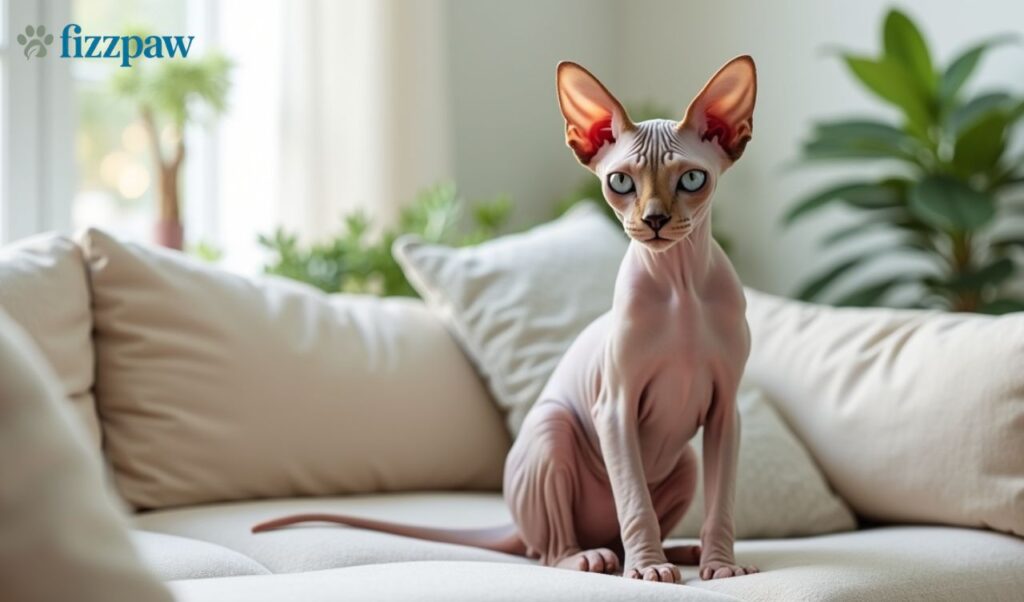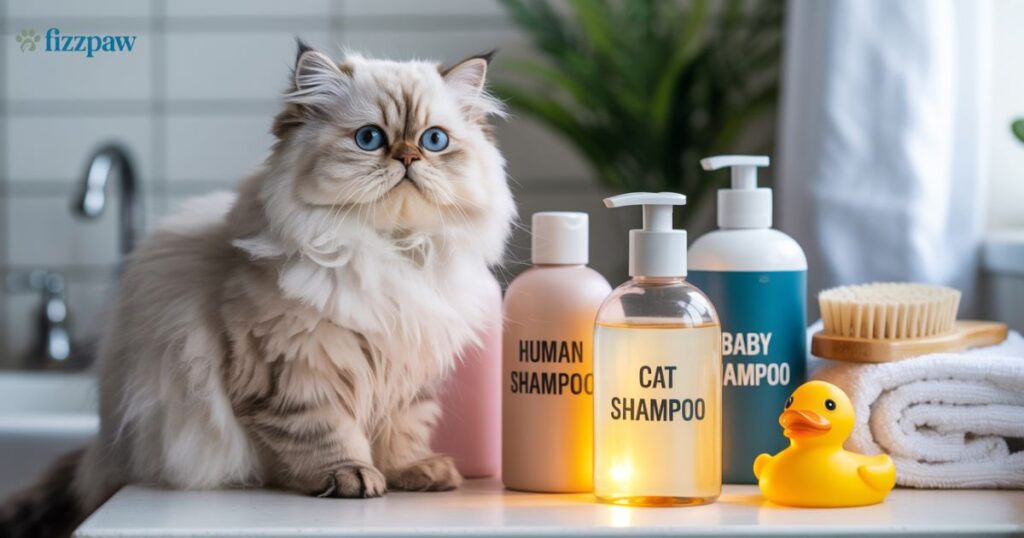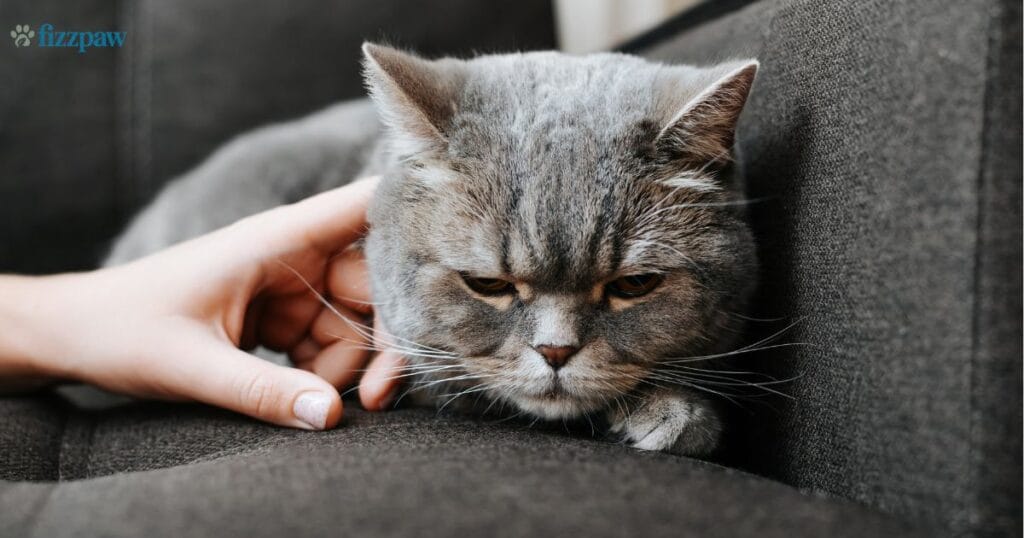You are not alone when you are a lover of cats and have to deal with allergies. The question asked by many in relation to this is, Do Hairless Cats Have Dander? The fact that there is a fur-less cat in the concept is something that people who sneeze and sniffle around the customary pets can only imagine in their dreams. Reality is not that simple, though.
In this comprehensive guide, you will learn whether bare cats such as Sphynx are safe for people with allergies, how cat dander actually acts, and what you can do to overcome the allergies to cat hair properly and finally be able to have a pet cat without feeling the nuisance of an allergy attack.
What Is Pet Dander and Why Does It Trigger Allergies?
Pet dander consists of skin flakes that are shed by animals. This dust can be harmless, observing that they brings in proteins that cause allergies. In cats, the principal protein is referred to as Fel d 1.
Fel d 1 occurs in the saliva of the cat, cat skin and the sebaceous (oil) glands. When cats wash their skin or fur, they expel saliva over their body. When drying up, the saliva becomes a dust that spreads in the air. That is why cat hair is not the actual cause of allergies, but it is the protein in the skin and in the saliva.
Important Facts:
- 3 in 10 people with allergies are allergic to cats or dogs.
- Cat allergies are twice as common as dog allergies.
- Fel d 1 can remain in the air or on furniture for months.
Do Hairless Cats Really Have Less Dander?
Some of you might believe that, with no fur, there is no dander. That however is a myth. Even hairless cats do not lack dander, like furry cats. The dissimilarity is the mode of spreading of the allergens.
Hairless cats, which never shed allergens, do not capture and release allergens as explained in the case of their furry counterparts because they do not have fur. However, they exude skin oils and some saliva proteins that may dry up to form dust and cause allergic.
Comparison Table
| Trait | Hairless Cats (e.g., Sphynx) | Furry Cats |
| Fur | Very little or none | Moderate to heavy |
| Dander Production | Present | Present |
| Allergen Spread | Skin oils, direct contact | Fur, shedding |
| Grooming Needs | High | Medium |
So, do hairless cats have dander? Yes, they do. It’s just managed in a different way.
Are Hairless Cats Better for Allergy Sufferers?
Hairless cats may be more manageable to people having allergies but they do not translate into a cure. Due to the fact that they do not shed hair, they emit fewer particles in the air. Nevertheless, they require regular bathing and grooming so as to get rid of skin oils and dander.
There are some individuals that are able to accept being around the hairless breeds. Others still react due to direct contact with skin or saliva. The level of the allergies will shape the way you cope with the hairless cat.
Pros of Hairless Cats for Allergy Sufferers:
- Less fur = fewer trapped allergens
- Easier to clean
- Often have short grooming routines
Cons:
- Still produces Fel d 1 protein
- Skin oils can irritate some people
- Need frequent baths (2–3 times/week)
The Truth About Hypoallergenic Cats
You may have heard that some cats are hypoallergenic. But what does that really mean? It simply means that they are less likely to cause an allergic reaction — not that they are allergy-free.
There is no such thing as a 100% hypoallergenic cat. All cats produce some level of Fel d 1. However, some breeds make less of this protein, which helps reduce reactions.
Common Hypoallergenic Breeds:
- Russian Blue (low Fel d 1 levels)
- Devon Rex & Cornish Rex (thin, curly coats)
- Balinese (lower Fel d 1 production)
Gender & Allergy:
- Neutered males and females produce less Fel d 1 than intact males.
So, while no cat is completely safe, you can make smart choices to reduce your symptoms.
Deep Dive into the Sphynx: The Most Popular Hairless Cat
It is also the most popular breed with the Sphynx cat. It has wrinkled skin, big ears, and a loving nature. The fur of these cats is thinner: they are covered with a peach fuzz.
By many allergy-prone individuals, Sphynx cats are preferred in the belief that they will be less of a menace. However, it is also important to keep in mind that they will continue to cause allergic reactions via their skin and saliva. The trick here is to deal with those allergens before they can spread.
Sphynx cats have to be bathed regularly (1-2 times per week), their skin becomes oily and unclean without fur to soak in oils. They also become very social and so, you will cuddle a lot, hence increasing body contact.
Daily Care Tips to Reduce Dander from Hairless Cats
If you decide to get a hairless cat, there are several ways to reduce dander and allergens at home.
Checklist:
- Bathe your cat weekly with a gentle, vet-recommended shampoo
- Wipe them down daily with hypoallergenic pet wipes
- Keep bedding and litter box clean and dry
- Feed a high-quality diet to improve skin health
- Use a HEPA air filter in your home
Regular care helps remove dead skin cells and reduce dander. Don’t forget to groom hairless cats with a soft cloth or brush to stimulate skin and remove allergens.
Additional Ways to Manage Cat Allergies at Home
Besides caring for your cat, you can make changes in your home to control allergens. This is especially important if you live in a small space.
Allergy Control Tips:
- Common rooms should use HEPA air purifiers
- Bedding and curtains should be washed every week at hot water temperatures
- Your bedroom should be free of cats
- HEPA-filter vacuum cleaning of carpets
- Use furniture that is easily cleaned, such as use of leather.
Drugs To Treat Allergy (Seek your Doctor First):
- Antihistamines (e.g., Claritin, Zyrtec)
- Nasal sprays
- Allergy shots (immunotherapy for long-term relief)
Do Hairless Cats Produce Fel d 1 Protein?
Yes, hairless cats do produce Fel d 1. This protein is found in their saliva, skin, and oils — not just in their fur. Since they still lick themselves to groom, they spread it like any other cat.
Breeds with Lower Fel d 1:
| Cat Breed | Fel d 1 Level |
| Russian Blue | Very Low |
| Balinese | Low |
| Siberian | Low–Moderate |
| Sphynx | Moderate |
Even though hairless cats don’t shed fur, their skin may release more oils, which means you’ll need to clean them more often.
What Vets and Experts Say About Hairless Cats and Allergies
Veterinarians agree that no cat is completely hypoallergenic. However, many say that hairless cats may be easier to manage for people with mild allergies.
Dr. Sarah Lewis, a vet, says:
“Hairless cats like the Sphynx can be a good option, but they require strict bathing and home cleaning routines. Consistency is key.”
Many experts also recommend trial visits before adopting. Spend time with the breed to test your allergic response. Some shelters offer “foster-to-adopt” programs just for this reason.
Frequently Asked Questions (FAQs)
What cat has the least dander?
The Sphynx and other hairless or low-shedding breeds like the Devon Rex produce less dander than most cats.
Do hairless cats produce dandruff?
Yes, hairless cats can still get dandruff due to their oily skin and lack of fur to absorb excess oils.
Do short-haired cats have dander?
Yes, short-haired cats still produce dander—it comes from their skin and saliva, not just their fur length.
Would I be allergic to a hairless cat if I’m allergic to cats?
Possibly, because allergies are caused by skin proteins like Fel d 1, not just fur, and hairless cats still produce them.
What is dander vs dandruff?
Dander are tiny flakes of skin that carry allergens, while dandruff are larger, visible flakes often due to dry or oily skin.
Final Thoughts
So, do hairless cats have dander? Yes, and it is simply that they do not disseminate it as do furry cats. No breed of cat is allergy-free in 100% allergy-free, but then, hairless cats can be less allergic to some individuals.
You could live with a cat, with a little bit of care, smart cleaning, and an appropriate cat, you will live without sneezing and having watery eyes. It is always
If you’ve found this guide helpful, make sure to check out our other articles about grooming your cat, allergies and pet care!




